Things to do in South Africa
Every country has its outstanding and special attractions. Goway has selected its Top 14 Things to do in South Africa (not in any particular order) for you to enjoy on your visit to this destination.
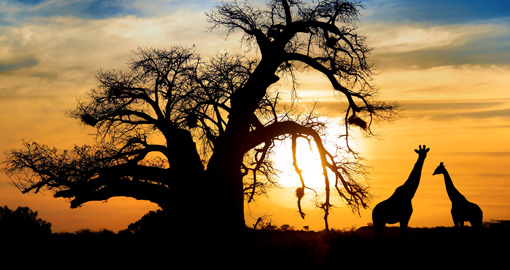
Table Mountain, Cape Town
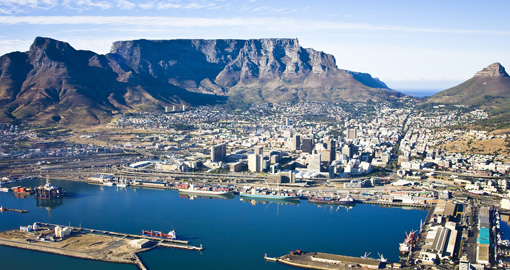
Table Mountain dominates the city skyline and literally hovers over the city. It is recognized as one of the new Seven Wonders of the World and is South Africa’s most photographed landmark. The rocks on the mountain are over 600 million years old making Table Mountain one of the oldest mountains in the world. Table Mountain offers fantastic views of Cape Town, Table Bay and Robben Island to the north and the Atlantic seaboard to the west and south. It is 3 kilometres/2 miles from side to side and has a flat top with edges consisting of steep cliffs (just like a table). When it is covered by a cloud bank which sometimes it is, this is referred to as the “tablecloth”. The Table Mountain Cableway takes passengers on South African vacations from the lower cable station to the plateau at the top of the mountain. The cars rotate 360 degrees during the ascent or descent allowing panoramic views of the city. You can hike along one of the walking trails or simply visit the shops or the restaurant.
Robben Island, Cape Town
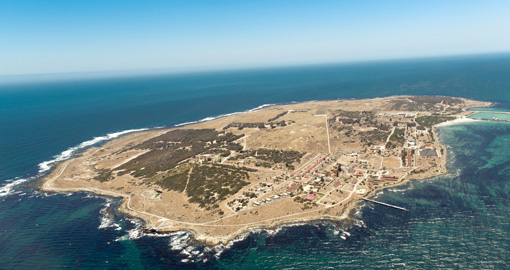
Robben Island is an island in Table Bay, 7 kilometres/4 miles west of Cape Town and is a UNESCO World Heritage site. It has become famous since the former President of South Africa, Nelson Mandela was imprisoned there for 18 of the 27 years he served behind bars before the fall of apartheid. Three former inmates of Robben Island have gone on to become President of South Africa: Nelson Mandela, Kgalema Motlanthe and Jacob Zuma. A tour to Robben Island takes 3.5 hours including the ferry rides to and from the island. You will see where Mandela was imprisoned and spent his time. Also, you will learn about the long history of Robben Island.
The Cape Peninsula and the Cape of Good Hope, Cape Town
_670138588.jpg)
The Cape of Good Hope is a rocky headland on the Atlantic coast of the Cape Peninsula. This is where the currents of the Indian and Atlantic Oceans meet at the point where the warm water Agulhas current meets the cold water Benguela current, a point that fluctuates between Cape Agulhas and Cape Point, just east of the Cape of Good Hope. The Cape of Good Hope has long been of special significance to sailors, many of whom refer to it simply as "The Cape”.
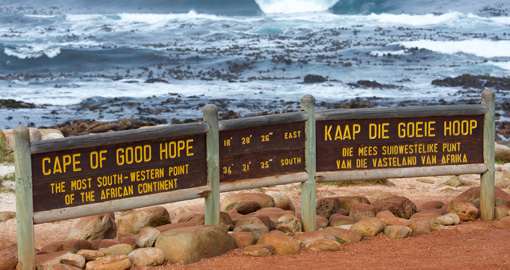
The Cape Peninsula is 52 kilometres/32 miles in length and has two main routes to cover all the outstanding attractions. On South African tours or a drive on your own, you will experience amazing scenery, deserted beaches, rugged cliffs and great bird watching. Some 250 species of birds have been spotted here including penguins and ostriches. En route, you will visit the Cape Point Nature Reserve with its rich diversity of animal and plant life. The tip of the peninsula has stunning views as if you are standing on the edge of the world. You are surrounded by rugged rocks and sheer cliffs towering more than 200 metres/650 feet above the sea.
The Penguins at Boulders Beach, Cape Town
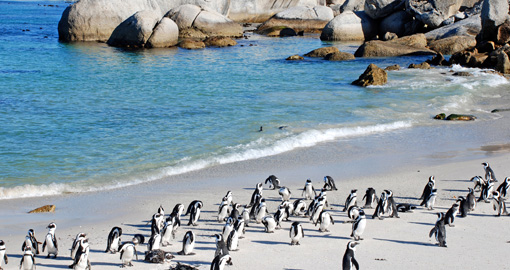
On the eastern side of the Cape Peninsula is Boulders Beach, a sheltered beach made up of a number of inlets sandwiched between granite boulders. Its major claim to fame is the colony of African penguins which makes its home on the beach in the town centre. You can get up close and personal with these birds who wander freely albeit in a protected natural environment. There are as many as 3000 penguins here. This large number is partly due to the reduction in commercial trawling which has increased the supply of pilchards and anchovy which form part of the penguins' diet. One special sight here was to observe the odd penguin that strays into the town. Whenever this happens, the local residents, who are equipped with nets, run after them and ensnare them with their nets and return the delinquent penguin back to the beach.
Hermanus
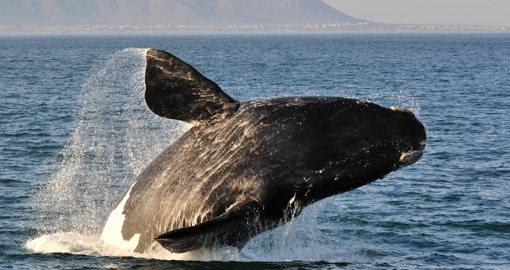
Hermanus, which is 122 kilometres/75 miles from Cape Town, is generally considered the best land-based whale watching destination in the world. From June to December, the bay becomes the swimming grounds for a large number of Southern Right Whales. You are almost guaranteed of seeing whales in September, October and November. Hermanus is the mating and breeding ground of the Southern Right Whale during the winter and spring months. They migrate from the Antarctic around June to calve and mate. Calving takes place in August and September and the males arrive for mating in October when the whale population peaks. There is a superb cliff-path walk from which to observe the whales and plenty of other hikes in the hills around the town. This town is known for its wine tasting and the Hermanus Whale Festival in September.
The Cape Winelands
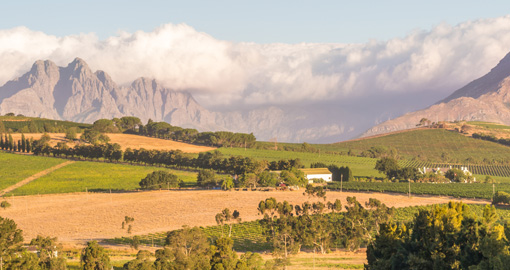
The Cape Winelands is approximately 40 kilometres/25 miles located in a series of valleys. The region is also a collection of historic towns and Cape Dutch farmsteads that produce excellent wines known worldwide to be enjoyed on South African tours. This very pretty area benefits from the local soil and a pleasant Mediterranean climate. The main centres are Stellenbosch, a charming old university town and the second oldest town in South Africa, Paarl with its beautifully restored Cape Dutch, Georgian and Victorian buildings and Franschhoek which lies in one of the most beautiful valleys of the region and has a wonderful collection of art and antique shops and galleries. In all of these, you will find world-class wineries that offer tours of their vineyards as well as wine tastings. There are also some excellent restaurants offering gourmet meals. Franschhoek is known as the gourmet capital of the country. Eight of the top 100 restaurants in the country are in Franschhoek together with around 30 wine cellars and over 28 restaurants.
The Garden Route
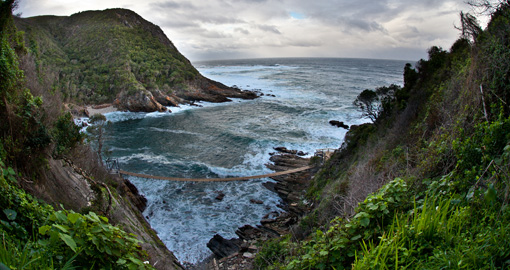
The word “Garden” here indicates a beautiful stretch of coastal scenery. Some call it South Africa’s Garden of Eden. It is located roughly between Mossel Bay in the west and Plettenberg Bay in the east, a distance of around 300 kilometres/185 miles. It has an exceptionally scenic coastline, excellent beaches with, in places, large waves crashing against tall cliffs, picturesque lakes and lagoons, ancient indigenous dense forests, dramatic ravines, deep gorges and abundant wildlife. There are also top-level golf courses, artists’ colonies, bungee jumping sites and attractive resorts.
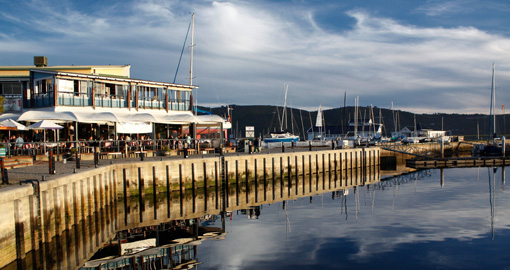
One of these resorts is Knysna located on an attractive lagoon with a large selection of accommodation and restaurants. Another is George known for its world-class golf courses and its proximity to the Outeniqua Mountains. The Wilderness is a very serene and charming village and the start of the more dramatic scenery along the Garden Route. It is here that you can walk along the beach with towering cliffs in the background together with rolling breakers and large stretches of white sand. It is a paradise for nature lovers, bird watchers and anyone wanting a peaceful sojourn. Plettenberg Bay is a seaside vacation town and a great place to relax for a couple of days on a South Africa vacation with its white sand and crystal-blue waters making it one of the country’s top tourist destinations. The beaches here are excellent and there are excellent golf courses, hiking trails and nature reserves nearby.
KwaZulu Natal
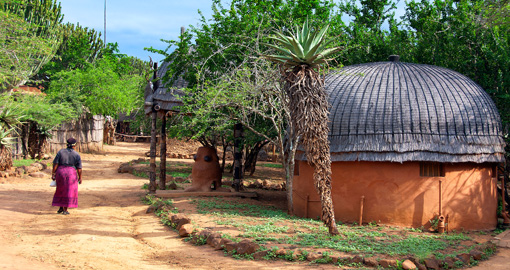
KwaZulu-Natal is home to the Zulu monarch, King Goodwill Zwelithini kaBhekuzulu. Although not holding any direct political power, the Zulu king is given a stipend by the government and holds considerable influence among the more traditionalist Zulu people in the province. Despite being constantly under threat from modernization, this area of KwaZulu-Natal remains intact and there are sites of great cultural significance to be experienced. One way to have this experience is to visit one of the many cultural villages to catch a glimpse of a special lifestyle and traditions. You can stay over in a traditional Zulu homestead, sample traditional Zulu food and visit a traditional healer. Some of the best places to visit are Shakaland, Dumazulu and Simunye.
Kruger National Park
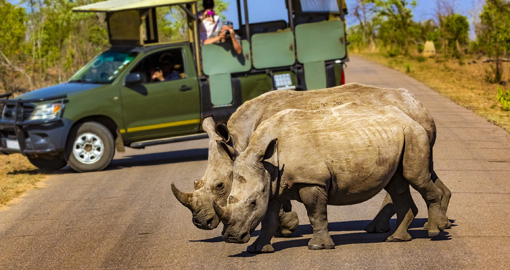
Kruger is not only South Africa’s largest game reserve but one of the largest in the world. It is 360 kilometres/220 miles in length north to south and its average width is 65 kilometres/40 miles. There are roughly 147 species of animals and 114 species of reptiles. The Big Five (Elephant, Lion, Leopard, Rhinoceros and Buffalo) are in abundance. There are also rhino, elephant, hippopotamus, lion, cheetah, hyena, warthog, zebra, crocodile, giraffe, wildebeest and many species of antelope. Over 500 species of birds exist in Kruger and, of this number, around 250 are annual residents of the park.
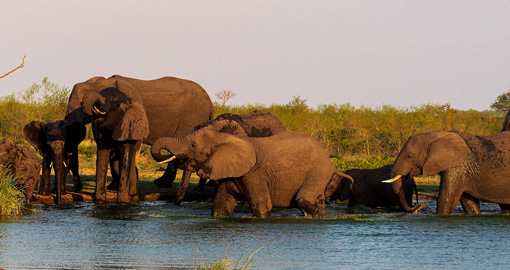
Accommodation in Kruger, on a South African vacation, can be at private game reserves, each of which has its own territory. The lodges in these territories share their domain only with each other so the game drives can meander anywhere within this overall territory. Vehicles can go off-road at any time giving the visitor a much better game viewing experience. Some of the best and most exclusive private game lodges in the country are in the Sabi Sands Game Reserve. The other alternative is less upscale accommodation in the public domain where game viewing is restricted to staying on the roads in the park.
The Blyde River Canyon
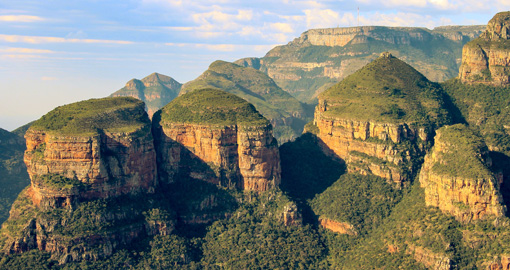
This is South Africa’s Grand Canyon and is the third largest canyon of its kind in the world. It has some of the deepest and steepest cliffs of any canyon on the planet and is the second largest canyon in Africa after the Fish River Canyon in Namibia. To get a perspective on the size of this canyon, go to what is known as God’s Window, the canyon’s most spectacular viewpoint with astonishing views over South Africa’s Lowveld. On a clear day, you can actually see the famous Kruger National Park. The canyon itself is 33 kilometres/20 miles in length. A highlight is the Three Rondavels, three huge pinnacles of rock rising above the canyon. Erosion wore away the soft underlying stone leaving exposed slate and quartzite that shape these dramatic rock formations. Nearby is the mining village of Pilgrim’s Rest. This is the place where gold was first discovered in South Africa. With its authentic old buildings and shops, Pilgrim’s Rest offers a fascinating insight into the gold rush days.
Sun City
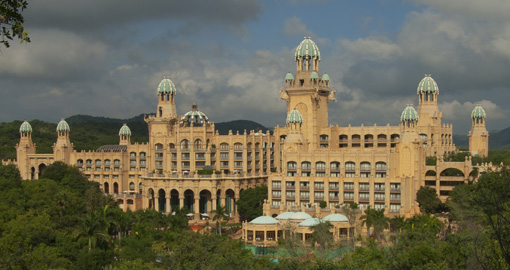
Sun City is a 2-hour drive or 45-minute flight from Johannesburg. To try and describe it, it is a whole self-contained entertainment centre oasis in the middle of the bush – a kind of Las Vegas in miniature. It has 5 hotels, 19 restaurants, 8 bars, a water park, 2 golf courses, a number of shops and stores, spas, movie theatres, nightclubs, and a casino. It is actually very well designed, spacious, and very green. One luxury hotel of note is the Palace of the Lost City with its unique design and hilltop location at the northern end of Sun City. The water park, known as Sun City Waterworld, is situated on a man-made lake and offers a wide choice of water activities including parasailing, jet skiing, wakeboarding, tube rides, and rowboats. In the evenings, you can enjoy local and international performers. Some famous names who have appeared in the past are the Beach Boys, Linda Ronstadt, Cher, Liza Minnelli, Frank Sinatra, Paul Anka, Rod Stewart, and Elton John. Nearby is the Pilanesberg Game Reserve which borders Sun City. The park boasts healthy populations of lion, leopard, black and white rhino, elephant, and buffalo – Africa’s “Big Five”.
St. Lucia Wetlands
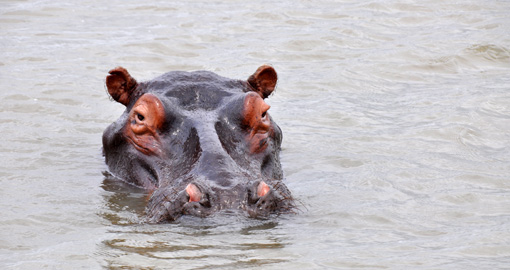
The St. Lucia Wetlands, also known as Isimangaliso Wetland Park, is one of South Africa’s most beautiful wetland and coastal sites with coral reefs, long, sandy beaches, dunes, lakes with hippos and crocodiles and swamps with birdlife. It is geographically diverse with inspiring scenic vistas along its 220-kilometre/130-mile coastline. From the clear waters of the Indian Ocean with wide undeveloped sandy beaches to a mixture of wetlands, grasslands, forests, lakes and savannah, the park contains exceptional biodiversity qualities. There are a large number of nesting turtles on the beaches and an abundance of dolphins and migration of whales and whale sharks offshore.
Soweto
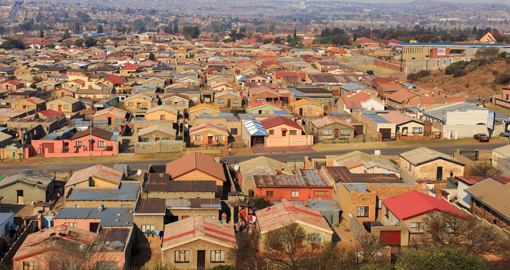
Soweto is an acronym for South Western Townships. Situated 20 kilometres/12 miles southwest of Johannesburg, it is a cluster of sprawling townships established in 1904 and created to house mainly black labourers who worked in the mines and other industries in the city. Soweto’s growth was phenomenal but unplanned. However, in recent years, the government has implemented the planting of trees, developed parks, and provided electricity and running water to the township. Soweto has progressed quite a lot since the 1980s. There is good housing, roads, street lights, and shopping malls – a long way from the informal shacks and squalor you might imagine. There are many organized guided tours to Soweto, on a South Africa vacation, which visit the Mandela Museum, located in the former home of Nelson Mandela, where he stayed with his wife, Winnie, before being imprisoned in 1961.
Kimberley
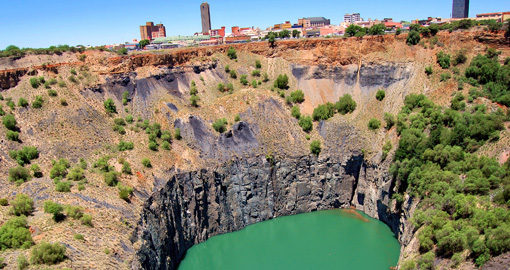
Kimberley is the home of the Big Hole, an open diamond mine and the city’s major attraction. It is an open-pit and underground mine and claims to be the largest hole excavated by hand. It has attracted visitors since mining operations closed here in 1914. The first diamonds here were found in 1871 when miners dug the hole with picks and shovels. The gold rush brought thousands of people from all over the world here. The Big Hole has a surface of 17 hectares/42 acres and is 463 metres/1,519 feet wide. It was excavated to a depth of 240 metres/790 feet. It is viewed by an open-air steel platform that juts over the Hole giving one a vertigo-inducing view right into the chasm.
Get a Trip Quote Order a Brochure

















